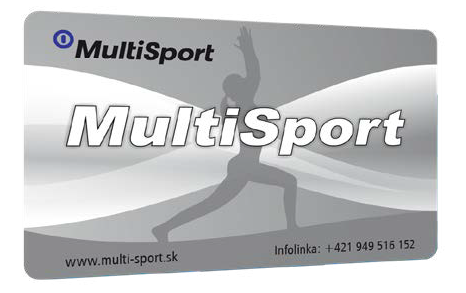
Pre zamestnávateľov
Pomôžte svojim zamestnancom
s work-life balance.
Zapojte sa do našej Veľkej letnej súťaže v termíne od 24.4.2024 do 5.7.2024 a hrajte s nami o skvelé ceny!

Zamestnanecký benefit.
Každý deň jeden voľný vstup do siete partnerských zariadení na Slovensku a v Českej republike.
Viac ako 230 rôznych aktivít.
Prístup do platformy My MultiSport.

Virtuálnu kartu môže využívať každý držiteľ zamestnaneckej alebo sprievodnej karty MultiSport.
Stačí si stiahnuť mobilnú aplikáciu My MultiSport a prejsť niekoľkými jednoduchými krokmi na prechod z plastovej na virtuálnu kartu.
Virtuálnu kartu môžete využívať každý deň na jeden voľný vstup do siete partnerských zariadení na Slovensku a v Českej republike.
Po aktivácii virtuálnej karty prestane byť vaša plastová karta aktívna.

Pomôžte svojim zamestnancom
s work-life balance.

Získajte neobmedzené možnosti pohybu a relaxu s kartou MultiSport.

Pomôžeme vám priviesť nových návštevníkov do vášho zariadenia.
športových a relaxačných
zariadení v našej partnerskej sieti
miest a obcí, kde môžete
používať kartu MultiSport
zamestnancov sa hýbe
a relaxuje s kartou MultiSport
zamestnávateľov, ktorí s nami
spolupracujú

